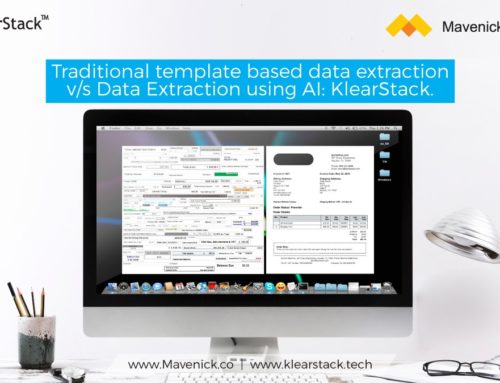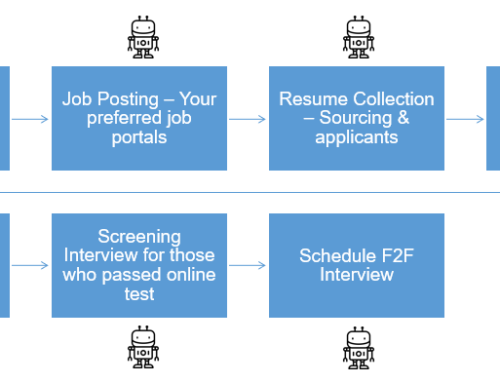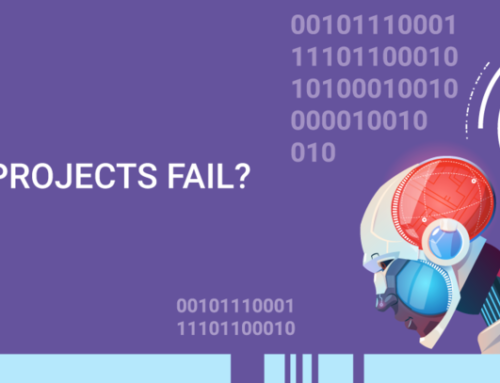
WHERE DOES AUTOMATION END AND ARTIFICIAL INTELLIGENCE BEGIN?
Very recently, I was at the RISE conference (Hong Kong) to showcase our automation offerings and philosophy.
During the conference, I got a chance to exchange notes with several other attendees. RISE this year had people from more than 400 start-ups around the world.
I was struck by how many of them introduced their offerings as Artificial Intelligence platform for XYZ or a product doing ABC, using AI as the key technology. It was almost like 395 out of 400 start-ups had AI as part of their solutions! AI was so widespread, that for a moment I thought “Wow! The world has so many AI solutions in less than 1 year!”
But then I poked around a little. With a simple question like “Ok, so you use Artificial Intelligence for ABC. Can you please help me understand more?” I found many founders trying hard to find a meaningful and crisp answer. I eventually realized that though these organizations claim that they use AI, not many of them truly do. Their offerings stopped on the “Conventional Automation” side of the line, rather than cross over onto the “AI” side. Let me try to explain what I mean.
Artificial Intelligence (AI) and automation are two buzzwords that are interchangeably used and sometimes abused. Hence often confused for being one and the same thing. But in reality, they are essentially different. I came back with a learning that what many digital age companies call AI is just good old conventional automation and not “artificial” intelligence. Yet, it was surprising how they referred to those as AI solutions.
So where does conventional automation end and AI begin? There is a thin, but clear line of difference. And believe me, the cross over to the AI side takes a lot of effort and a different mindset.
Conventional Automation
In simple terms, automation is the ability to integrate tools, people, and processes so that the system operates automatically while carrying out clearly defined, rule-based acts.
Automating the data backup and restore processes by IT division of any organization, or sending out email notifications to customers for premium renewals for an Insurance company are some examples of rule-based automation.
The key here is the mention of the term “rule-based”. I tend to think of this as doing exactly what humans would do under the same circumstances, but doing it faster, with lesser effort.
For “rule-based” automation, one has to ensure that all the rules are clearly “coded” in the software. That means the software knows all rules or conditions up-front and upon encountering any of those, the system responds in a predetermined manner. However these systems will fail and worse still – may behave unpredictably – if the software encounters a situation that does not perfectly fit into the pre-programmed rules or conditions. In such cases, developers would normally end up patching/ updating the software to add a new rule.
Artificial Intelligence
Whereas Artificial Intelligence involves making machines or software mimic human behavior and intelligence, this goes beyond the “rule-based” paradigm.
Algorithm needs to be trained before it can start making decisions. In supervised learning, the algorithm is trained using known sample of input data and corresponding decisions/ outcomes. This makes the algorithm understand the decision-making/ relationship patterns from past inputs & outcomes. The more comprehensive the training data, better is the learning.
With AI, the trained algorithm acquires a clear sense of reviewing all the data at hand, and arriving at the best available decision – from iteration to iteration. Tasks involving intuition, judgment, understanding human communication, persuasion, reasoning, and problem-solving are good use-cases for artificial intelligence.
In a nutshell, AI focuses on making machines acquire human-like decision making capabilities after the algorithm is trained – either in a specific area (voice, vision, spatial etc.) or generic areas (decision making in complex situations where data from multiple senses need to be evaluated to make the decisions).
Use of unsupervised learning algorithms too is on the rise. However there is still an underlying goal that any algorithm is trying to solve for.
AI algorithms existed for a few decades now. However the technology advancements (e.g. availability of large data, rich processing power and our improved understanding of how human brain functions) have now made it possible for AI to move from labs/ experiments to solving some real life use cases.
What’s the difference?
Automation differs from Artificial Intelligence in the sense that the software must always be provided with instructions for it to work.
Consider an example from real life. A robot that is programmed to work as an arm on a car assembly, would perform its tasks based on a pre-programmed set of instructions to wait for the car to arrive, rotate itself in exactly x degrees, pick up a bumper from a specific place, rotate again in y degrees and fit the bumper on the car at precisely the location that it was programmed for.
AI is much more than that. It involves a program that is capable of learning from past data and also from its continuous experience, while gathering live data. For instance, when an artificial intelligence algorithm is fed with past data of a video game played by numerous players, it learns the game by going through the path taken by all players and associated result (loss or win), rather than needing the rules to be programmed up-front. This way, the algorithm finds the rules.
Conventional automation algorithm needs to be “fed” with rules; whereas AI algorithm “finds” the rules.
After going through comprehensive data and live experiences, pretty soon AI algorithm can even beat a human at it. The famous example of the computer Go program called AlphaGo, powered by Google’s DeepMind, beating a professional player, five to zero comes to mind, in this context.
Rule-based automation is ideal for performing structured and repetitive tasks, such as entering purchase invoices in an ERP system or registering new customer accounts in systems, or night time data center operations and batch processing. The goal here is to use automation to reduce errors, save time & costs.
Rapid development in the field of Artificial Intelligence has created a new breed of cognitive technologies with human-like capabilities such as recognizing natural language, identifying images and handwriting etc.
AI is nowadays trained and used to understand real-time telephonic conversations to interpret the terms, their context, and attitudes and gather a deep understanding of the situation. Hence artificial intelligence is already being extensively used in customer facing applications that process vast amounts of textual information – such as emails, online service feedback, chats, and other digital material. It has proved to be a boon for banks, insurance companies, call centers, technical support and public sector organizations.
A good example is of the 3rd generation Nest Learning Thermostat. This learning thermostat uses behavioral algorithms to learn from your heating and cooling preferences and also as per seasonal changes, thus predicting and adjusting the temperature in your home or office based on your own personal needs.
Conclusion
There is a need for intelligent automation that waits to be fulfilled. When brought together, robotic process automation, analytics, and cognitive technologies can form highly useful end-to-end automation solutions that help us become more effective. There is a real synergy waiting here to be exploited.
My view is that the new age businesses should promote the actual benefits of their products and offer solutions to real life problems rather than overselling their products as AI solutions.
I wondered – maybe these companies are doing so to get attention of investors. AI as a buzzword is popular among venture capital, private equity and angel investors. Or maybe the founders think their solutions will be more appealing to the market, if the customers hear about cool terms like AI and Machine Learning. However you (the founders) must know that just like you, others are smart too and can see through your oversell. And when you are caught on the wrong foot, it might be already too late.
Hence I firmly believe that the founders should focus on how their offering solves the actual need, size of the market they are addressing and their differentiation, rather than latching on the hot term of the day – and risk being found short.
ASK US QUESTIONS
Do you have any views or questions?
Categories
AI, Machine Learning, Rules Based, Automation, Startups, Rise 2017



